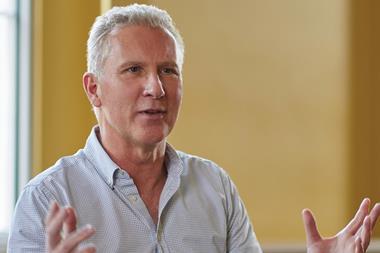Insurance Times asks industry experts how the sector can effectively balance the implementation of environmental policies with profitability.
WE ASKED: How can the insurance industry authentically integrate environmental polices to ensure a commitment to sustainable development and avoid a checkbox mentality while striking a balance with profitability?
Liz Tubb, group general counsel and sustainability committee chair, McLarens
Organisations should consider both their own carbon footprint alongside how business operations and services impact the environment.

In loss adjusting, for instance, the latter might include ensuring that claims are handled with resilience and sustainability in mind.
Initiatives should be focused on making a tangible difference, from reducing water and energy use, to electric car schemes. The best way to ascertain this is to undertake a company-wide review of your organisation’s global carbon footprint.
These are rare in loss adjusting, but crucial in helping businesses set detailed plans and tangible targets. Findings can be benchmarked against in future years to ensure policies aren’t simply a box ticking exercise.
Be realistic but ambitious. You may not have all the answers to ESG challenges, but it’s important that organisations strive to do the best they can with a considered and informed approach.
It’s important to listen to your teams, clients and customers, seek out good practice and support employees in developing core competencies.
Strategies must be led from the top down and statements of intent – such as a responsible business statement – can be helpful in clarifying an organisation’s commitment.
Ultimately, any strategy needs to be aligned with commercial objectives and it’s worth noting that many policies, such as reducing travel, will already have an additional benefit for bottom line finances.
Matt Connell, director of policy and public affairs, CII
There are many areas in the insurance value chain where insurers and brokers can make a significant difference.

Firstly, through holistic advice, brokers and underwriters can give risk-based advice to clients, share insights about the impact of environmental change – such as with flooding – and potential mitigation.
This advisory role extends beyond clients to policymakers, as insurers offer guidance on determining when certain activities in specific regions may become uninsurable.
As an Institute of Actuaries report, published in July 2023, said: ”Descriptions can be helpful for decision makers to understand the potential impacts of a hot-house world for companies. Insurance leaders have unequivocally stated that if climate change raises average temperatures to 4˚C above pre-industrial levels, most assets will be uninsurable.”
Then there is transactional advice, where broker give advice about products that have a sustainable element, such as ‘building back greener’ – explaining the dynamics around issues like cost and sustainability.
In the provision of sustainable products, one significant growth area is sustainable claims, which involves building resilience.
For example, this includes incorporating flood mitigations by redesigning damaged properties to make them more resistant to floods – raising them off the ground, installing electrical sockets at higher elevations and using more sustainable materials.
Another approach is rebuilding using existing structures, particularly when they are sound, instead of starting from scratch.
However, the challenge here is to persuade customers to contribute to the cost of more sustainable options, where it is significantly greater than a more traditional approach.
In these ways, insurers can combine their key mission of managing risk with an active and responsible approach to environmental change.
Phil Barton, chief executive, Partners&
There is no doubt that we are running out of road when it comes to implementing meaningful policies that will minimise our impact on our communities and contribute to our wider sustainable development goals.

Regardless of which lens you look through, whether that is attracting talent, responding to sustainability conscious clients or simply running our business more efficiently and ethically, we must rethink the way we operate.
We may need to start small, but we need to start.
One key step is to adapt our mindset – environmentally inspired adjustments to our operations do not necessarily negatively impact our bottom line.
On closer inspection, we can all implement changes that could have a significant impact on our carbon emissions, whilst also saving on expenses and overheads. Who wouldn’t welcome that?
Our view is that introducing sustainable policies that align with the United Nations Sustainable Development Goals, will ultimately lead to making our business more resilient to the myriad challenges we face daily.
We’ve recently launched our sustainability strategy and our people have really embraced it, which is great to see.
We want to lead by example and demonstrate to our clients that small changes we individually make, will lead to big improvements for us all.
Read: The increasing need for climate-related insurance solutions – Chubb
Read: New carbon offsetting-focused motor broker launches in UK market
Explore more ESG-related content here or discover other news analysis here
Hosted by comedian and actor Tom Allen, 34 Gold, 23 Silver and 22 Bronze awards were handed out across an amazing 34 categories recognising brilliance and innovation right across the breadth of UK general insurance.



















































No comments yet